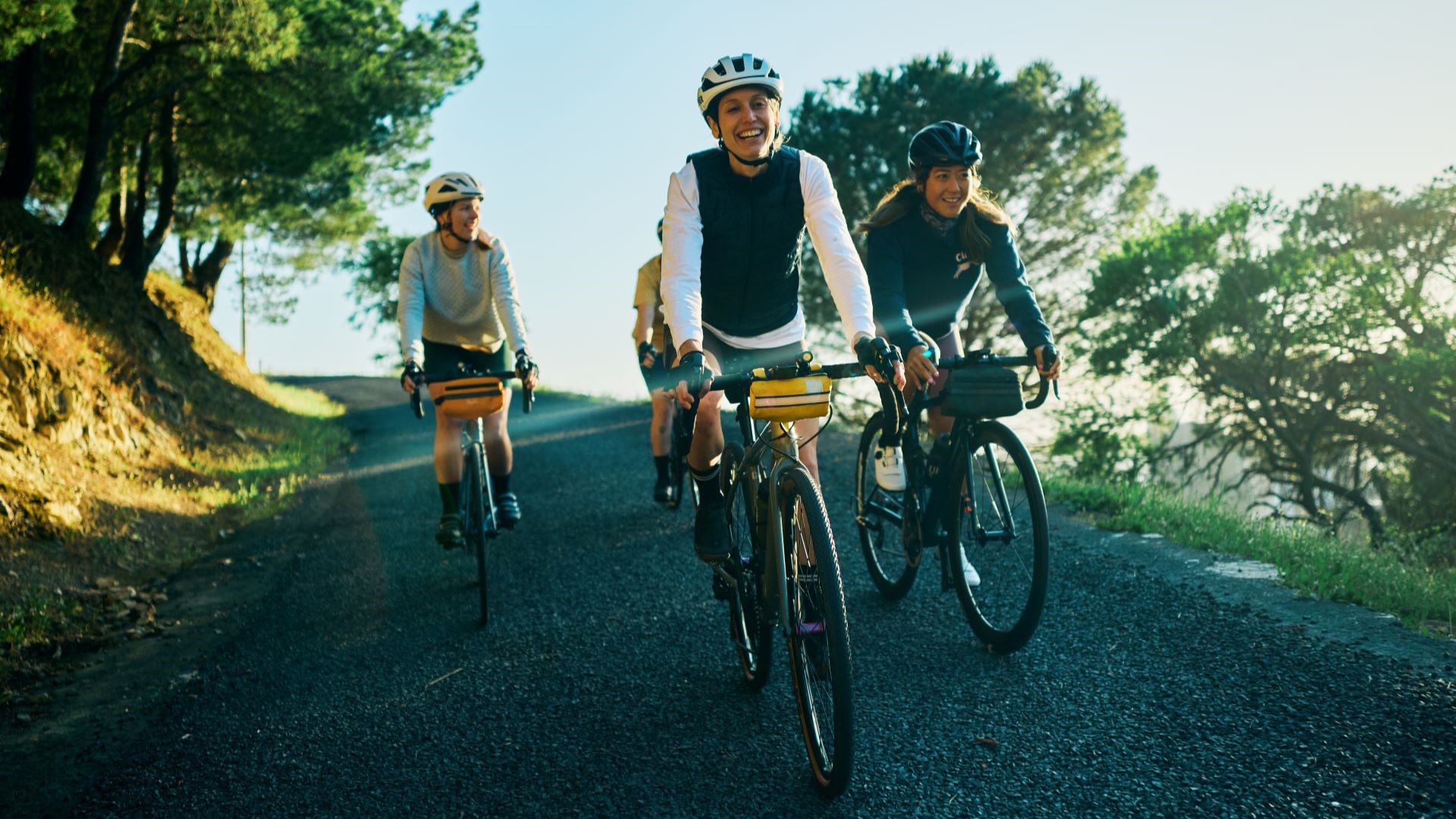
My last race of the season wrapped up a few weeks ago, marking the arrival of chilly air, earlier sunsets, and wet roads. For many of us, the changing of the season also changes our riding habits - winter being a time for base miles and building a strong foundation for next year. As I ease into these rides, I’m reminded of how much I love the simplicity of a long, slow ride. No worrying about intervals or pacing—just riding for the sake of being out there. While my pace during these rides is markedly slower this time of year, I’ve found a host of benefits and real freedom in riding slowly.
The most obvious benefit is that by slowing down your pace, you’ll be able to ride longer. As the self-proclaimed queen of slow, endurance riding, I can attest to this fact in my personal riding. With multiple DFL (Dead F’ing Last) titles to my name, including at MidSouth Gravel 100 and Unbound Gravel 100, I know that I can ride forever at a 10 mph pace. During training rides or group rides where I bump up the intensity and ride faster, I tire out much more quickly. I’ve found myself more tired after a 30-mile fast ride than a 100-mile moderate-paced ride.
This is not just anecdotal—scientific research supports it. While intense exercise improves fitness faster, consistent low-intensity cycling gradually builds aerobic capacity and muscular endurance. Research in The Journal of Applied Physiology suggests that low-intensity, long-duration exercise has a favourable effect on mitochondrial density and cardiovascular endurance. In other words, cycling at a slower pace over longer periods helps your body become more efficient at using energy and strengthens your heart and muscles over time.
Slow cycling is also easier on the joints than high-intensity cycling, making it an ideal exercise for people with joint issues or arthritis. Research published in Arthritis Care & Research highlighted that low-impact exercise like cycling helps maintain joint function and reduces pain. As someone with a history of two knee surgeries, I can attest to this also—my knees feel much better after a slow to moderate ride than after a fast effort.
There’s also emerging research that consistently training at a slower pace can actually increase your ability to ride faster on race day (just ask Tadej Pogacr about his Zone 2 training!). As explained in a recent Strava article, riding slowly trains your slow-twitch muscle fibres. These muscle fibres are our primary engine for endurance sports, and fat is used as an energy source. Slow rides improve our ability to use fat as an energy source, delaying the need to use carbohydrates as energy, which is more limited. This leaves the carbohydrate fuel for when you really need it—climbing hills, sprints, or charging ahead during the big race.
Aside from the physical benefits to your body from riding slowly, there are innumerable additional benefits or freedoms too often overlooked—the freedom to be present for one. Think about the last great mid-ride conversation you had. Odds are you were likely riding at a relaxed enough pace to form full sentences, listen to what your riding partner was saying, and respond thoughtfully. Trying to do that during a full-out effort. It’s not nearly as fun.
Another huge benefit to riding slowly is actually being able to take in the scenery you’re riding through. Going slow allows you the freedom to literally look around without worrying about the wheel in front of you. Potholes come at you a lot slower at 10 mph than 20 mph, so as long as you stay alert and don’t get too distracted, you can still ride safely while enjoying the scenery.
I realise that riding slowly is a huge challenge for many folks, especially as many of us seek to continually improve (and speed is often the gauge we use to determine improvement.) Whether you’re chasing a QOM or trying to keep up with the local shop ride, there’s a definite thrill to riding fast. I’d encourage you, however, to mix it up a bit. While not every ride needs to be slow, try varying your pace on your next ride and see how you feel afterwards. I’m willing to bet you’ll still finish the ride with a smile on your face and feeling good.
So I encourage you to slow down. Enjoy the base mile season and wintery rides ahead by scaling it back and notch, and who knows, you may be stronger when next season rolls around.







